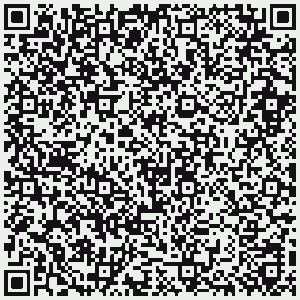It is the framework which changes with each new technology and not just the picture within the frame…Marshall McLuhan
Have you noticed those ubiquitous maze-like squares that are being plastered on everything from dog biscuits to airline tickets? For example, instead of a printed boarding pass you can now check in by having a QR code on your smart phone scanned as an electronic ticket. Quick Response (QR) codes have been the rage in Japan (a Toyota subsidiary developed the technology), but Americans have been slow to adopt the system. Not us. We are into new gizmos, and QR codes are no exception.
What are QR codes? According to Wikipedia,
A QR code (short for Quick Response) is a specific matrix barcode (or two-dimensional code), readable by dedicated QR barcode readers and camera phones. The code consists of black modules arranged in a square pattern on a white background. The information encoded can be text, URL or other data.
QR codes are like square barcodes, and can be easily generated, printed, embedded, or otherwise affixed. For example, we are beginning to add QR codes to our interpretive signs that link viewers to updated information about the particular site or thing being interpreted. We are also using QR codes in SmartTrail development, adding QR codes to trail signs and wayfinding markers.
For example, QR codes can be added to park signs to give visitors access to interactive maps, weather, the park’s website, contact information, or alerts. The following is a simple example of a QR code.

This particular QR code contains Fermata’s web address. Scan the code with a QR reader on your SmartPhone, and you will proceed directly to the Fermata website.
Here is another example:

Scan this with your iPhone, and Ted’s vCard will be placed into your contacts.
QR is not the only tagging scheme available. Other schemes include MS Tag, Data Matrix, Aztec Code, and Micro QR Code. QR coding is the most widespread, however, and therefore we are focused on how to incorporate this technology into our work. Tagging schemes are also becoming location aware, adding an interesting dimension to this techology.
The Great American SmartTrails program includes a number of these approaches, including a SmartTrail app for iPhone, Android, and Blackberry. The app offers a broad range of options not available with QR codes, such as navigation. However, we feel that QR codes are an important enhancement for our interpretation, and you will see them more frequently in our work in the months ahead.
One advantage to QR codes is the cost. Readers and code generators are available on the internet for free (we like Qrafter as a reader, and have linked it above). There is a cost for printing the codes, but this is possible on your home computer.
One word of caution, however. Channeling McLuhan, the medium threatens to become the message. Bar codes, QR codes, GIS coordinates, and the like simply provide convenient triggers for interpretation. In themselves these schemes have no interpretive value. However, in the hands of skilled interpreters these are valuable tools for enhancing interpretive programs and products. Technologies such as QR codes are wonderful advancements, but nothing replaces the interpretative content at the heart of it all.